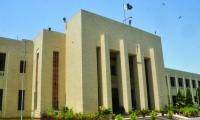In the recent past, authorities have introduced a number of interventions related to cultural tourism in Lahore. But the approach lacks a holistic vision.
It is important to develop an integrated approach for heritage sites and buildings to reflect a unanimous feel of the iconic metropolis. For this, a distinct ‘Subject Plan’ should be initiated for varying categories of heritage sites. Subject plans have a special relevance in urban planning, addressing only one aspect of planning at a time, horizontally across the board. Markets all over the world have a significant relevance to tourism and cultural tourists. ‘Markets” or ‘old bazaars’ define the relative importance of towns and cities and their socio-cultural worth.
In this perspective, a ‘subject plan’ with the central idea of ‘Rejuvenating the Mughal era markets of Lahore’ should be initiated. The title itself is self-explanatory. For instance, facade uplift, infrastructure rehabilitation, lighting, waste management, revamping, plantation, removal of encroachments, etc should be integral to uplift the markets to attract tourists and preserve the soul of historic places. The marketplaces of old towns have a nostalgic feel. The shops are mostly attractive with colorful textiles, there’s a sharp scent of spices and street food wafting from stalls, permeating the air with local flavours. This aroma should be restored in the most favourable manner.
Mostly heritage markets or bazaars have an interesting story and history. The influence these markets hold over civilisations are no less important for us to pass on to our coming generations. Certainly, the Grand Bazaar, Spice Bazaar in Istanbul, Chandni Chowk in India etc hold such attractions for tourists all over the world. These economic hubs are more popular for their historic relevance and they are maintained to the level the places deserve.
Anarkali Bazaar in Lahore remains one of the oldest surviving markets in the Subcontinent, dating back at least 200 years. The area extends from the south of Lahori Gate in the old walled city to across the British-era Mall Road. The interesting history related to its name has a romantic significance to it. The popular tale of ‘Anarkali’ as immortalised by Imtiaz Ali Taj is important in that such tales add to tourism promotion policies. They help transform the heritage site in light of its historical and cultural and literary significance. Visitors love to relate with the recreated setting that takes them back to certain moments of the history.
In this perspective, the approach from Mall Road should be cleared of encroachments that are mainly invaded by garment vendors. This space could be beautifully transformed into a narrative retelling the epic love story of Emperor Jahangir and his beloved Anarkali through art. The square could be added to with Mughal-era structures like benches, street lamps, tiles, restored balconies with gated entrance etc. This will not only capture the interest of the tourist and visitors but could also become the iconic face of the historic metropolis.
The present fabric of the souk is so unimpressive, ordinary and dilapidated that no one can assess its relative importance; it is in dire need of some restoration – not only in terms of infrastructure, but in a true sense by launching a massive ‘action plan’ to redefine it as a world-class market place. For instance, there is a temple there which has now become part of the market; it needs to be restored and preserved. Furthermore, the entire alley of the main market has remnants of history scattered at every nook and corner. There are numerous historic buildings, with beautiful balconies, windows, doors but all in extremely bad shape. Then there are terribly shabby and unpleasant-looking electricity poles in the entire marketplace.
We need to remember that these broken structures are our past; there is a story behind every door, each turn has stories of our ancestors. All this is waiting to be preserved.
Very few know about the fact that the mausoleum of Sultan Qutbuddin Aibak of Mamluk Sultanate is also located at Anarkali Bazaar. In the early 1970s, the mausoleum was renovated on the orders of the then prime minister Zulfikar Ali Bhutto. However, the area has not been maintained and connected. There is a lot more that has become obsolete and our children will never come to know about it if we ignore it today.
The bazaar is now divided into two sections: 'Old Anarkali Bazaar' and 'New Anarkali Bazaar'. Old Anarkali Bazaar is noted for its traditional food items, and has been successfully converted into a food street. It has a great foodie visitor turnover. New Anarkali Bazaar is noted for the popular Paan Gali, Bano Bazaar and Dhoni ram, and Kaseera Bazaar, Naulakha Bazaar, that are in need of being upgraded, well-labelled and improved in terms of their facilities. The names of the bazaars are catchy, romantic and manifest the poetic intricacies of Mughal-era amalgamation with architecture and urban planning. This could be highlighted to educate our generations about the past.
Unesco is intending to initiate an upgradation project for the Lahore Museum, Punjab Public Library, Tollinton Market and NCA – to be developed as a cultural district. The concerned authorities should take advantage of the moment and integrate the adjacent Anarkali Bazaar’s restoration with this. The bazaar has many faces, containing within it a lively market, a dense residential zone and public buildings from the colonial period like the landmark institution of King Edward Medical University next to it. The Neela Gumbud cycle market that faces the medical university could also be upgraded and encroachments cleared. In this entire region, one monument leads to another. It certainly forms a cultural district that can be holistically developed and well integrated for the ease of tourists.
Time and again efforts have been made to upgrade this significant place. For instance, the inclusion of Anarkali Bazaar in the 2020 World Monuments Watch aimed to support the efforts to revive the area and restore the community’s places of interest. In late 2020, the WMF had joined local actors in the project to recapture Anarkali Bazaar’s traditional fabric through cultural mapping and stakeholder engagement, awareness campaign of neighbourhoods’ significance and by bringing communities together in the creation of a comprehensive heritage trail. But to date no such tangible change has been observed.
Mall Road is the central artery which holds enormous relevance to history. But it's landmark historical buildings are not maintained to the level they should be. Though in the past some steps were taken by the authorities for removal of signboards, the situation has gone bad again, with advertisement boards again hampering the beauty of old monuments and the paint of facades decaying as no one owns this heritage.
Our authorities must recognise the fact that culture is not a luxury, it is a necessity. It gives economic benefits and nurtures social values. This kind of cultural district should be looked after as a child – vigilantly and watchfully. No price can be placed on preserving one’s culture, values and tradition.
The writer is a Lahore-based urban planner, economist, and artist. She can be reached at: erumashfaq52@yahoo.com
Strong public warning systems can also help ensure quick evacuations in places prone to fires
PPPs in Pakistan's WASH sector face significant regulatory and policy challenges that hinder their effectiveness
Instead, it would have powerful chairman with three-year term, appointed at prime minister’s discretion
This is more than just education; it’s an opportunity to inspire next generation of scientists and engineers
Failure to impose credible farm tax is embedded both in Pakistan’s politics and country’s sorry economic history
However, low tax collection and narrow tax base remain unresolved issues







